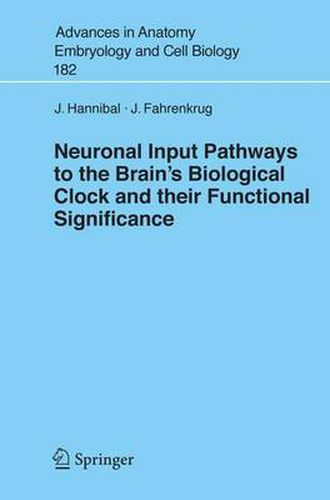Readings Newsletter
Become a Readings Member to make your shopping experience even easier.
Sign in or sign up for free!
You’re not far away from qualifying for FREE standard shipping within Australia
You’ve qualified for FREE standard shipping within Australia
The cart is loading…






This title is printed to order. This book may have been self-published. If so, we cannot guarantee the quality of the content. In the main most books will have gone through the editing process however some may not. We therefore suggest that you be aware of this before ordering this book. If in doubt check either the author or publisher’s details as we are unable to accept any returns unless they are faulty. Please contact us if you have any questions.
Rhythmic changes in physiology and behaviour within a 24 h period occur in living organisms on earth to meet the challenges associated with the daily changes in the external environment. The circadian pacemaker responsible for the temporal internal organisation and the generation of endogenous rhythms of approximately 24 h is located in the hypothalamic suprachiasmatic nucleus (SCN) in mammals. The endogenous period generated by the pacemaker is close to, but generally not equal to 24 h and the biological clock therefore needs to be daily adjusted (entrained) by external cues. The daily alteration of light and darkness due to the rotation of our planet on its own axis in relation to the sun is the most prominent zeitgeber which adjusts the phase of the circadian rhythms to the astronomical day length, a process known as photoentrainment. In mammals, light is perceived only through photoreceptors located in the retina. Light information is mediated to the SCN via the retinohypothalamic tract (RHT) by activation of the classical photoreceptor system of rods and cones and a more recently identified system of intrinsic photosensitive retinal ganglion cells (ipRGCs) using melanopsin as a photopigment.
$9.00 standard shipping within Australia
FREE standard shipping within Australia for orders over $100.00
Express & International shipping calculated at checkout
This title is printed to order. This book may have been self-published. If so, we cannot guarantee the quality of the content. In the main most books will have gone through the editing process however some may not. We therefore suggest that you be aware of this before ordering this book. If in doubt check either the author or publisher’s details as we are unable to accept any returns unless they are faulty. Please contact us if you have any questions.
Rhythmic changes in physiology and behaviour within a 24 h period occur in living organisms on earth to meet the challenges associated with the daily changes in the external environment. The circadian pacemaker responsible for the temporal internal organisation and the generation of endogenous rhythms of approximately 24 h is located in the hypothalamic suprachiasmatic nucleus (SCN) in mammals. The endogenous period generated by the pacemaker is close to, but generally not equal to 24 h and the biological clock therefore needs to be daily adjusted (entrained) by external cues. The daily alteration of light and darkness due to the rotation of our planet on its own axis in relation to the sun is the most prominent zeitgeber which adjusts the phase of the circadian rhythms to the astronomical day length, a process known as photoentrainment. In mammals, light is perceived only through photoreceptors located in the retina. Light information is mediated to the SCN via the retinohypothalamic tract (RHT) by activation of the classical photoreceptor system of rods and cones and a more recently identified system of intrinsic photosensitive retinal ganglion cells (ipRGCs) using melanopsin as a photopigment.